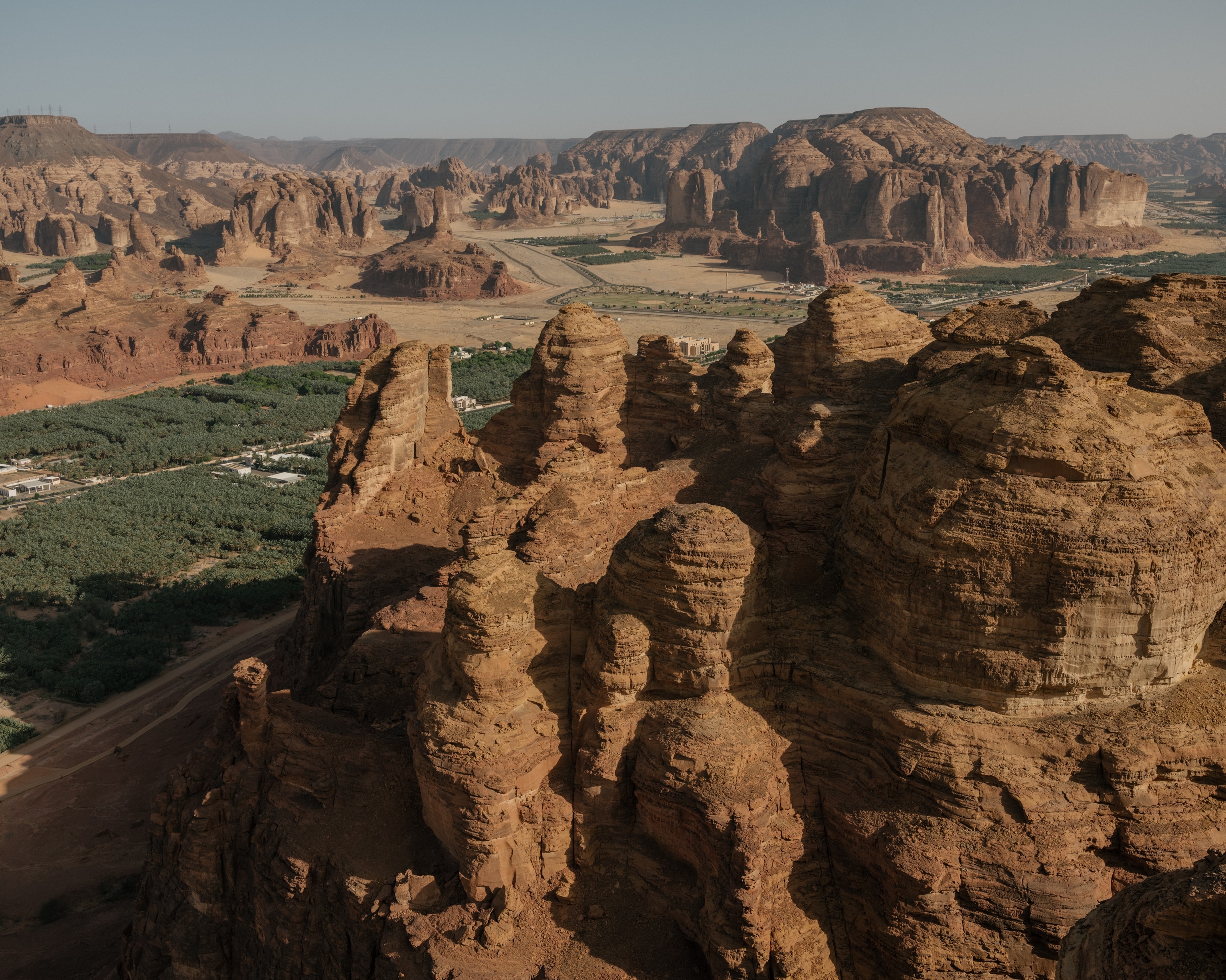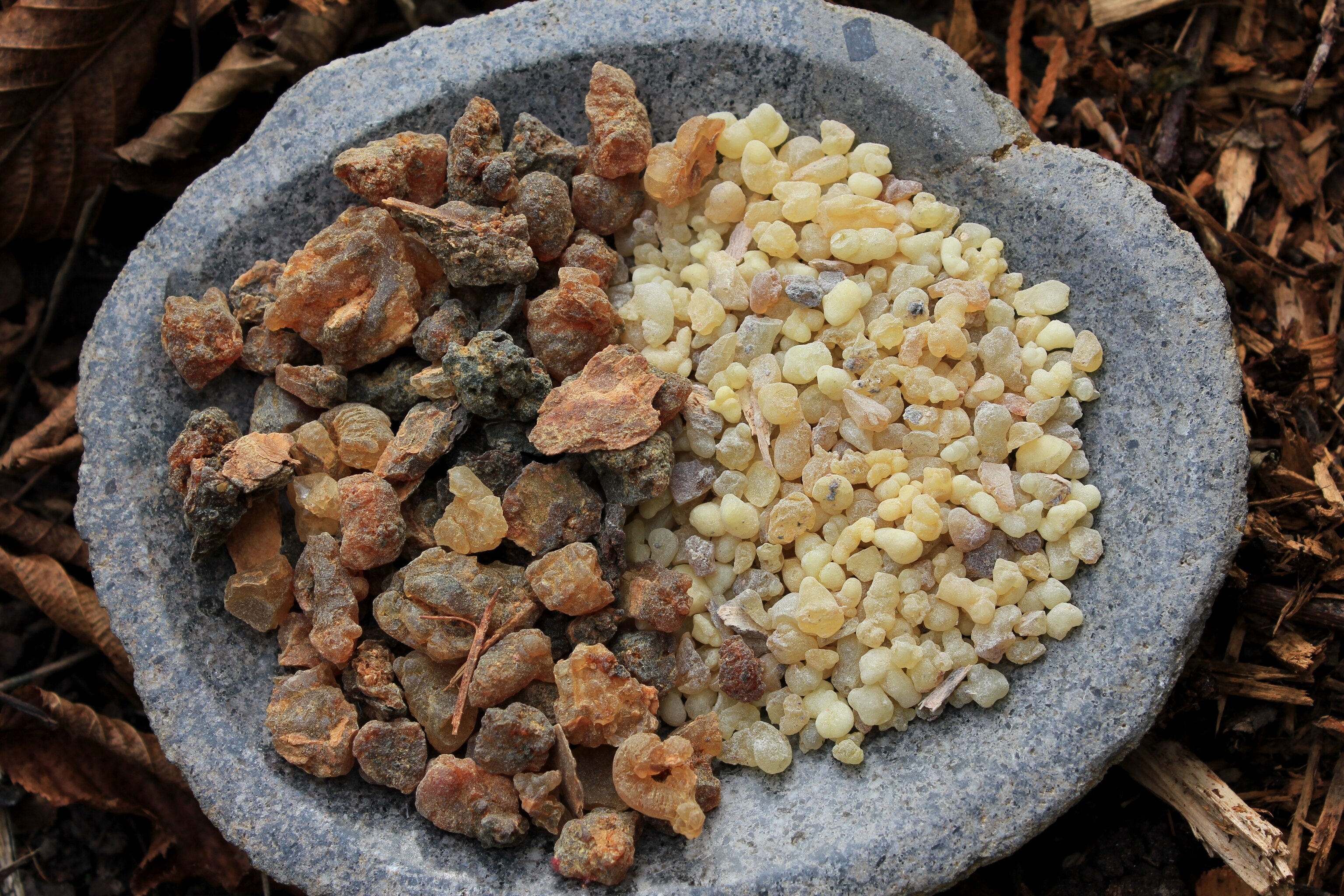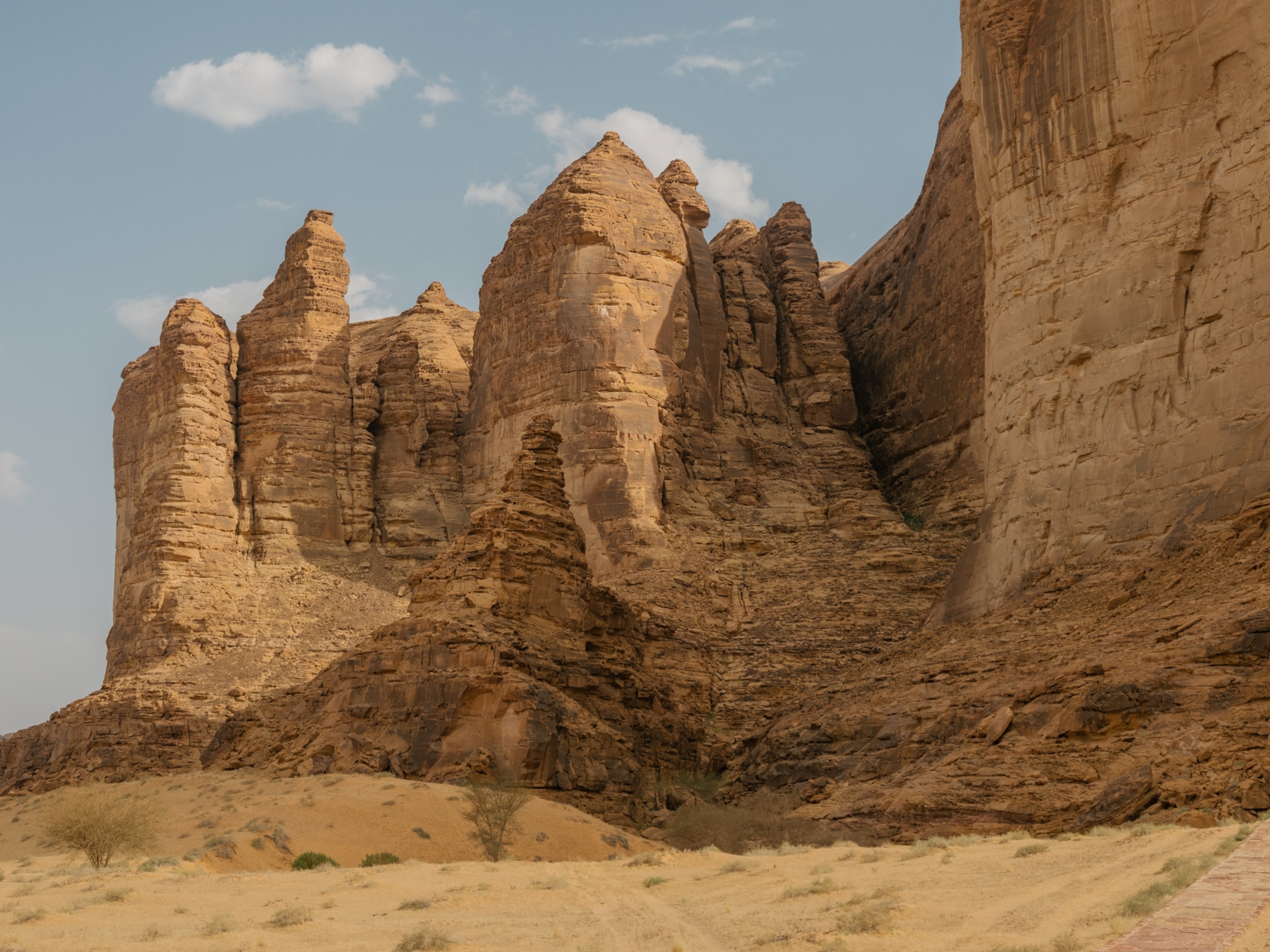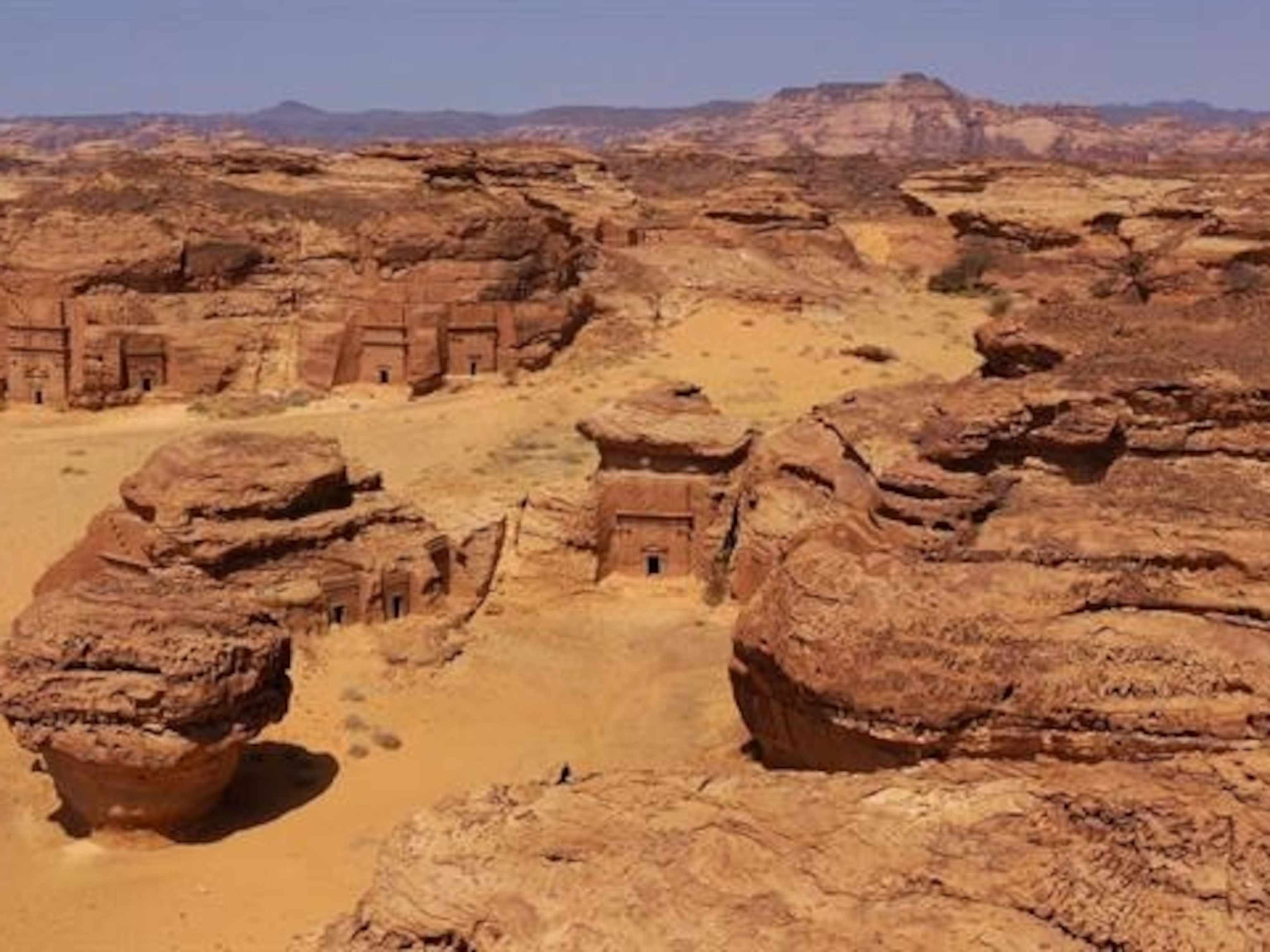
Scent and spice: AlUla’s incense road
For more than a thousand years the oasis city of Dadan, capital of the kingdoms of Dadan and Lihyan, and its successor, the Nabataean city of Hegra nearby, were linchpins of an extensive trading network that spanned continents.
In the world of the desert, water is essential for settlement and civilization. The AlUla valley, where Dadan stood, had water in abundance—both ground water and surface flows of seasonal rains off the surrounding mountains, collected and stored for use during dry months. Archaeobotanists—specialists who study trace evidence of ancient plant growth—are able to identify crops cultivated here at different times through history. We know that dates, pomegranates, grapes, and wheat formed part of the mix in earlier centuries at Dadan. Later, Hegra’s farmers were growing varieties of wheat and barley, lentils, chickpeas (garbanzo beans), and figs, as well as dates and pomegranates. Adding to this remarkable variety were fodder crops such as vetch, which helped support livestock including sheep, goats, cattle, chickens, and camels.
Such plenty, watered within these oases, encouraged people to settle. By at least 2,500 years ago, the AlUla valley served as a transit point for long-distance trade. Archaeologist Abdulrahman Alsuhaibani notes that AlUla “held a strategic position on the major north-south caravan routes through Arabia.” Merchants would lead camel caravans on months-long journeys more than a thousand miles across the desert, from southern Arabia to Dadan and beyond, aiming for distant markets around the Mediterranean and further afield.
Why would traders make such journeys? The profits would have been substantial. Initial forays would have been made carrying aromatics such as frankincense and myrrh, and semiprecious stones from South Arabia such as agate. Then, as networks developed, trade expanded to include spices from the Indian subcontinent and beyond— adding to already long-traded commodities such as textiles, leather, tools, and arms. Alongside came new influences in art, architecture, culture, and language.

A particularly highly prized asset was frankincense, “one of the most sought-after commodities in the ancient world,” says historian Michael Macdonald. This resin—honey-colored, whitish or even green—forms in lumps from the sap of just one very special tree, named Boswellia sacra in Latin, that grows only in the semi-arid highlands of southern Arabia and adjacent lands in the Horn of Africa. Burn frankincense, and the smoke released has a uniquely heady, powerful scent. It became essential to various types of rituals throughout the classical civilizations of ancient Greece and Rome. South Arabian farmers would harvest frankincense and other aromatic resins and spices, such as myrrh, bdellium, and myrobalan, in vast quantities, and send it north to market.
Many routes converged on Dadan, which quickly became famous, even mentioned in the Old Testament for its significance in cultural and commercial exchange. Reflecting the Lihyanite kingdom’s importance, the Roman author Pliny the Elder referred to the head of the Red Sea, known today as the Gulf of Aqaba, under the name “Gulf of Lihyan”.
Merchants from the far-distant South Arabian city of Ma’in, which lay near a major source of frankincense, even set up residence in Dadan. This group appears to have been a colony of traders, living “in peaceful coexistence with their hosts,” says Macdonald. Alsuhaibani concurs, talking of the AlUla valley’s “long tradition of openness” in this era. The Ma’ini (Minaean) traders enjoyed special status in their adoptive community, which took on international prominence: at this time, by contrast, Greek sailors and traders were paying tolls to Lihyanite tax collectors.

Trade in luxury aromatics reached its peak after the Nabataean people took control in the first century BCE. The Nabataeans, a tribe originally from the Arabian interior, blended elements of diverse cultures together in a unique civilization, fueled by wealth from their commodity dealings, particularly in frankincense. They carved fabulously elaborate tombs into the sandstone cliffs that surrounded their trading city of Hegra—built a short distance from Dadan on a desert plain just north of the AlUla valley—and drew water from cisterns designed to capture rain as well as more than a hundred wells. Archaeologists have unearthed numerous small alabaster jars at Hegra, perfect for holding spices and aromatics, as well as glazed pottery from the east and delicate glassware from the north and west. With a web of trading routes linking to South Arabia, the Red Sea, the Nabataean capital of Petra (in what is now Jordan) and the markets beyond, Hegra was able to funnel the supply of frankincense and other luxury goods to customers at all points of the compass. In turn, it imported high-quality crafts and products from far afield. The oasis prospered.
The Roman Empire annexed Nabataea in the second century CE. Initially this may have expanded Hegra’s horizons still further—there is evidence that Roman soldiers from North Africa and elsewhere garrisoned the town—but it also signaled decline. As historian François Villeneuve puts it, Hegra was simply “too far away” from the centers of Roman power to sustain political or economic investment. This change in priorities forced a shift in trade patterns. Traditional overland routes had already been overtaken by maritime shipments (with an interim hybrid sea-and-land journey sustained through Hegra), but once the Roman Empire was in decline, demand for Hegra’s luxury commodities also diminished. The Romans appear to have abandoned Hegra in the third century.
The AlUla valley continued to support populations throughout subsequent centuries, trade ebbed and flowed. Nonetheless, that one vital luxury commodity on which all those dreams and accomplishments were based—frankincense—never lost its power to delight. To this day, burning frankincense from southern Arabia is still a key part of cultural interactions in many parts of the Arab world and beyond, its indefinably rich aroma filling reception rooms and meeting halls. The long history of this natural emblem of abundance and hospitality remains rooted in the mercantile skill of the ancient peoples of AlUla.
Journey through time to discover the rich history of AlUla here.




